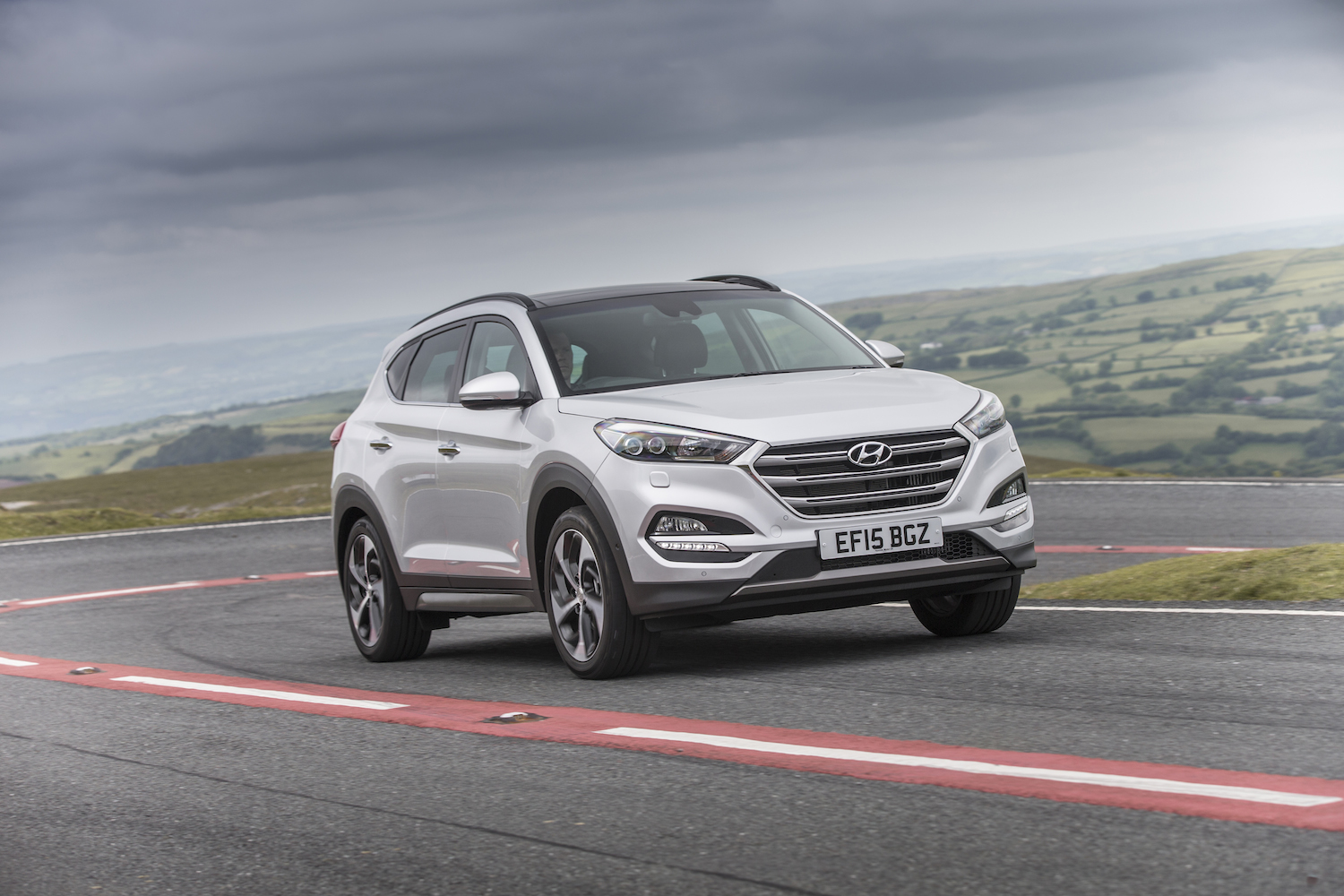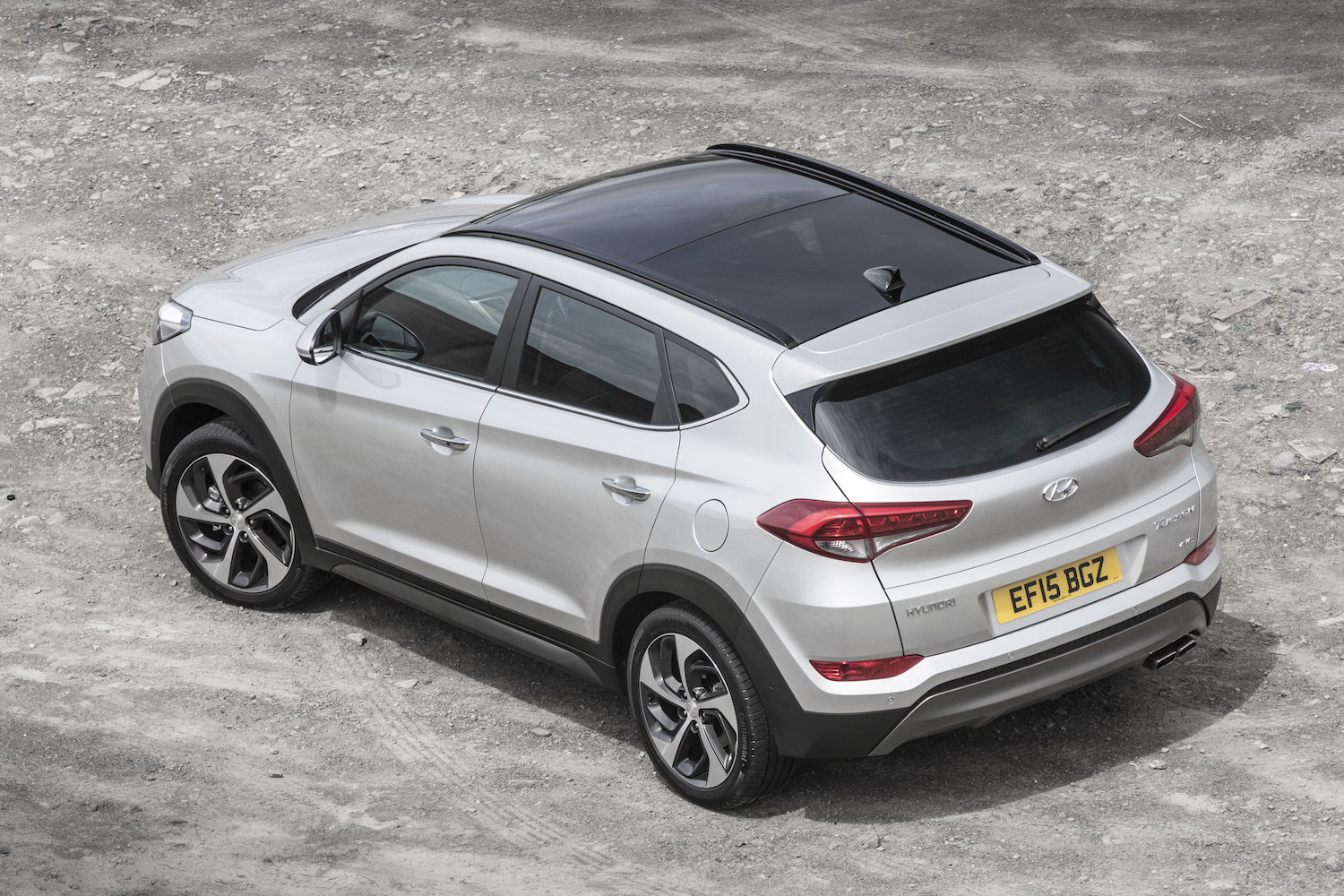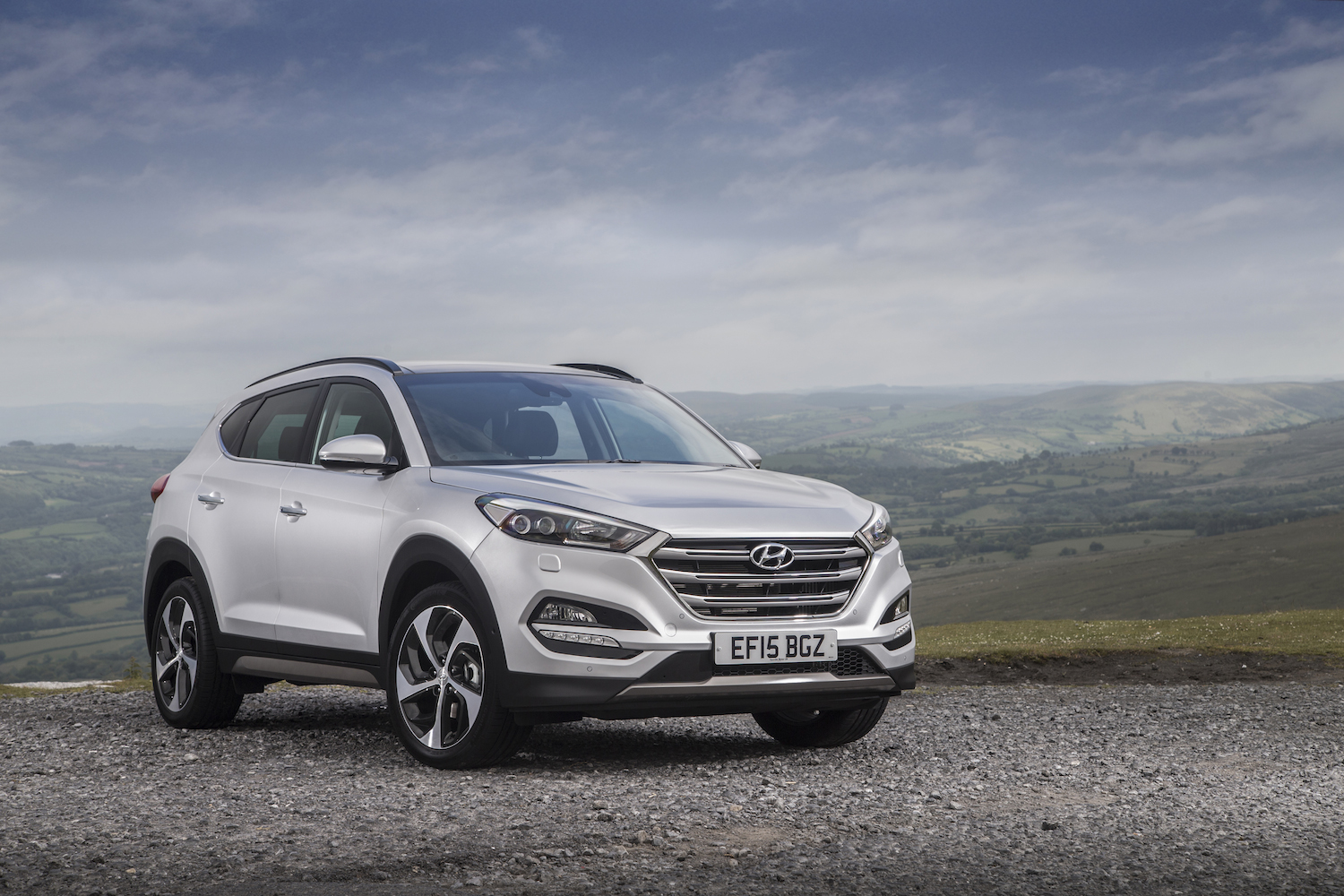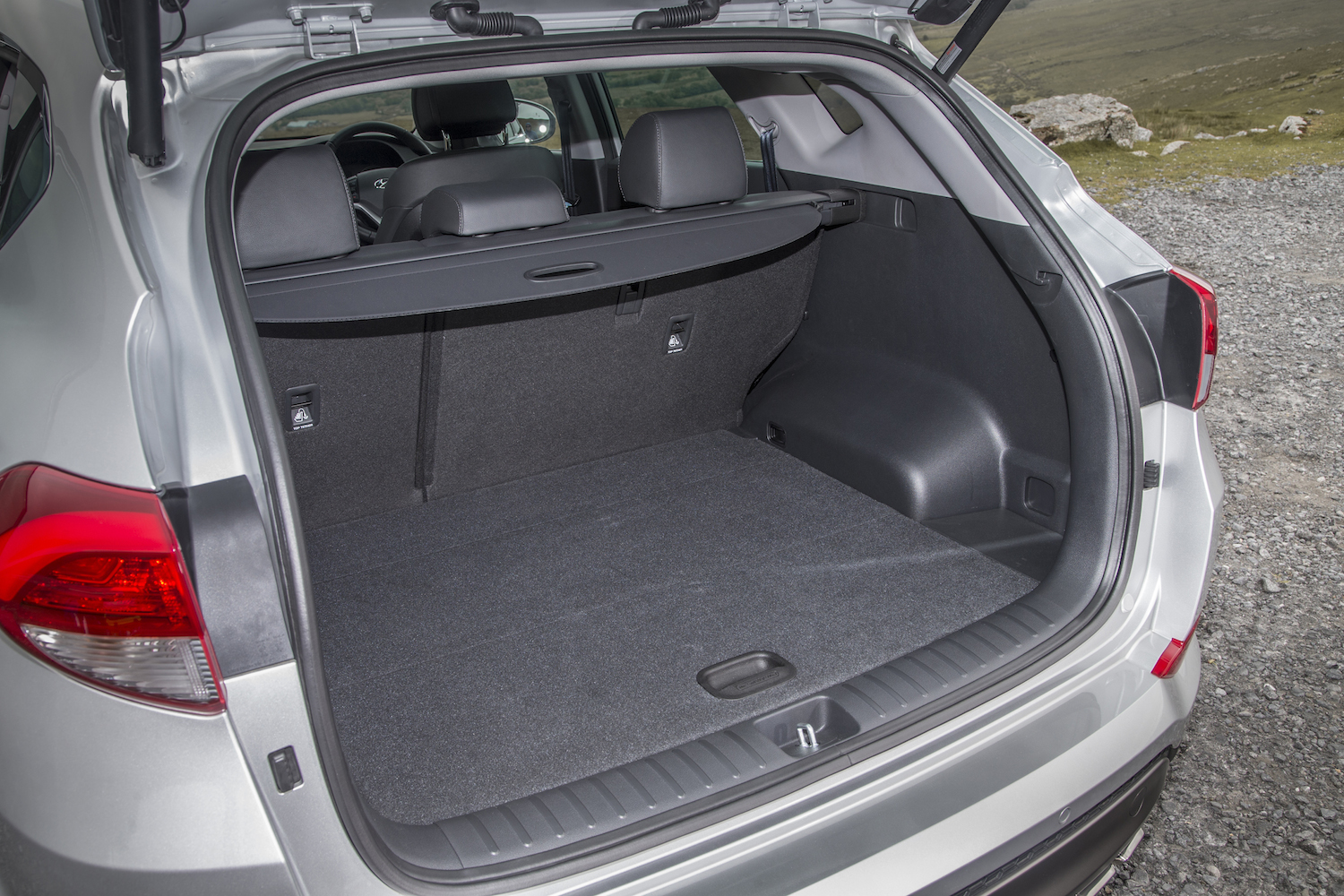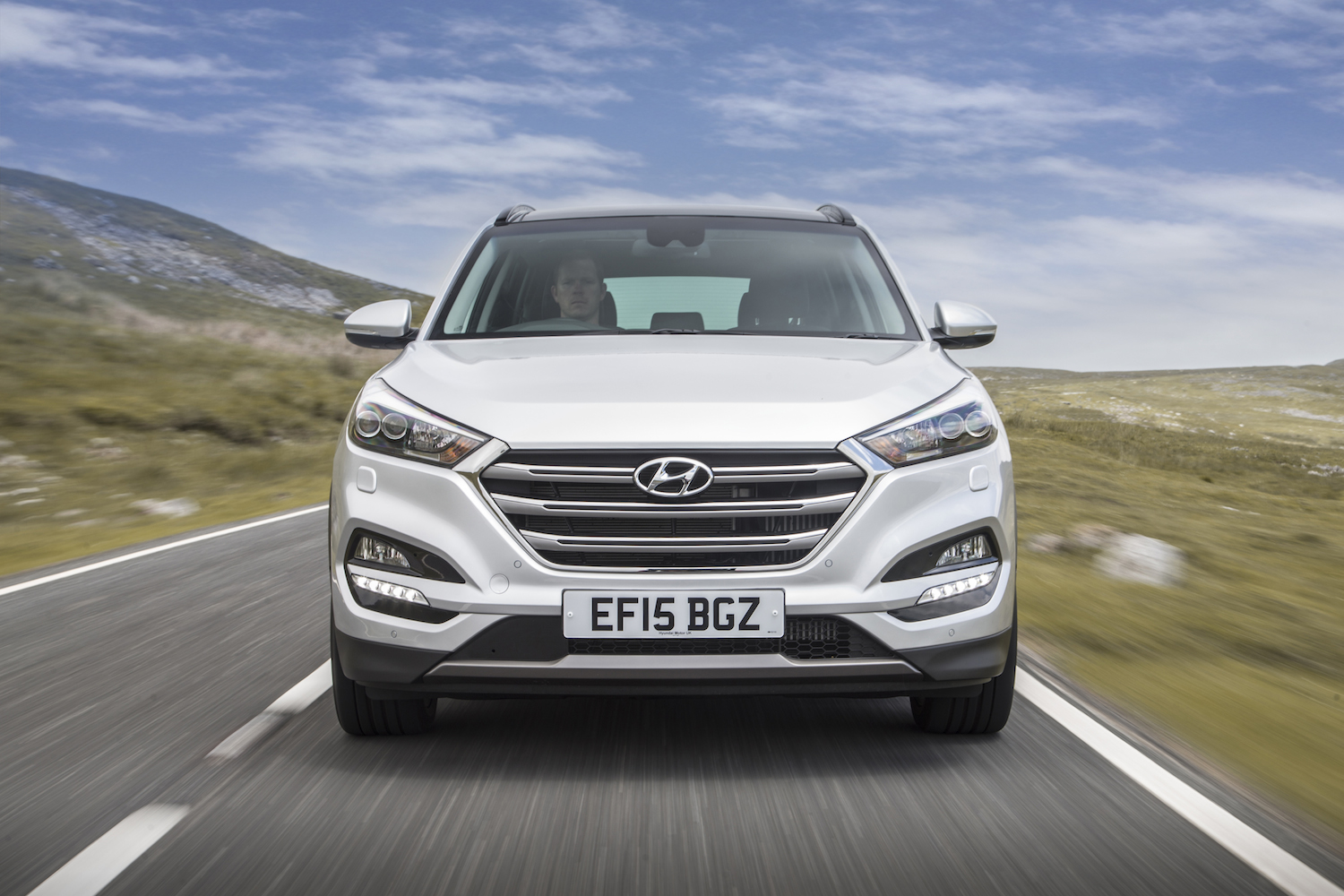 Around a decade ago, Hyundai launched a compact SUV in the UK called the Tucson. Then came the freshly designed and European built ix35 in 2009 which took away the Tucson name, and sold as many cars in its first year as that original Tucson sold in its entire UK lifespan.
Around a decade ago, Hyundai launched a compact SUV in the UK called the Tucson. Then came the freshly designed and European built ix35 in 2009 which took away the Tucson name, and sold as many cars in its first year as that original Tucson sold in its entire UK lifespan.
Now, things have come full circle, as Hyundai returns the Tucson name to its C-Segment SUV.
In the six years between this all-new car and its namesake, the C-SUV market has become hugely important, with the ix35 moving itself to being Hyundai’s second best-seller in the UK. Which means nailing the product in this sector is vital for Hyundai’s future plans.
The result is a handsome new Tucson that is very much on trend, with a bluff chrome-covered nose, sharply creased and sculpted sides, and a roofline that curves towards the rear. Extra features such as asymmetric wheel arches, distinctive LED daytime running lights, and twin exhaust tailpipes, means the new Tucson has real visual impact.
There’s also thoughtfulness in the design, such as the lower section of the tailgate being made of plastic so it’s cheaper to replace in the event of an accident. The new car features 51% high strength steel, boosting crash protection and refinement over the departing ix35.
Prices begin at £18,695 for the entry-level S trim car with a 1.6-litre petrol engine, climbing to £32,345 for the top-spec Premium SE 4WD 2.0-litre diesel with 182hp.
The expected best-selling 2WD 1.7-litre diesel SE Nav rolls in at £22,795, undercutting a similarly equipped Nissan Qashqai by £650.
2015 Hyundai Tucson: On the road
Most of our time on test was spent in the range-topping 182hp 2.0-litre diesel 4WD model, mated to a six-speed automatic gearbox. With 295lb-ft of torque it has the most twist of the Tucson range, yet never felt truly capable of the claimed 9.5 seconds 0-62mph time. The engine is at least refined, and the gearshifts smooth if slightly slow.
We also experienced the 1.6-litre T-GDI turbocharged petrol engine, fitted with the seven-speed DCT dual-clutch transmission. With 175bhp, and a kerb weight some 80kg less than the big diesel, the turbo petrol feels more capable of hitting 0-62mph in the 9.1 seconds. It’s no GTI, but offers decent cross-country progress.
Automatic versions do feature a Sport mode, although this seemed to make little difference to overall driving beyond encouraging the gearbox to cling onto a gear for slightly longer.
Ride quality is generally good, and whilst the bigger 19-inch wheels fitted to top-spec cars do make you aware of bumps and potholes in the road, the Tucson does an impressive job of isolating you from them.
Body control is also impressive – there’s no sense of the Tucson being a wallowing SUV – with a crisp turn-in to corners. Steering feel is lacking, but Hyundai is hardly pitching the Tucson as sports car, and it doesn’t detract from the ability to place the car accurately on twisty roads. Braking is strong and progressive, without being overly aggressive in initial bite.
Hyundai’s launch route included the use of gravelled forestry tracks to demonstrate the Tucson’s SUV credentials. While most buyers will never venture further off-road than parking on a kerb, the Tucson does offer some ability away from tarmac.
In 4WD models 100% of the torque is sent to the front wheels until they lose traction, after which up to 50% can be sent to the rear axle. There’s also the option to lock the torque split at 50/50 at speeds below 25mph. On the loose gravel surfaces the Tucson maintained the same confident composure as on tarmac, with the 4WD system subtly transferring torque to keep things moving.
2015 Hyundai Tucson: On the inside
Whilst the preceding ix35 was never praised for its interior, Hyundai has made a leap forward with the new Tucson. Everything is set out clearly and logically, with most functions controlled through the 8-inch touchscreen.
While it’s an obvious improvement in quality, with the Tucson covering such a wide price range, what feels acceptable at £18,000 might not be so well received at £32,000. Hyundai is targeting BMW and Audi customers with the premium Tucson models and whilst the interior certainly doesn’t feel cheap, some buyers might view it as a compromise.
However, the payoff is a standard specification far more substantial than the equivalent German-brand car. DAB radio is standard across the range, along with USB / AUX inputs, Bluetooth connectivity and air conditioning. Moving up the range, SE grade adds rear parking sensors, climate control, heated front seats, and cruise control over the standard ‘S’ specification.
Premium adds more toys in the shape of auto wipers and lights, privacy glass, leather seats and a blind spot warning system. SE Nav, unsurprisingly, adds satellite navigation that features TomTom Live updates, but also includes a useful reversing camera.
Go all out on the Premium SE model, and you’ll benefit from ventilated front seats, a huge panoramic sunroof, keyless entry, heated steering wheel, and an electronically assisted tailgate. This flagship trim level may be expensive, but there is almost nothing extra you could ask for in terms of technology.
Interior room is decent and boot space is above average for the class, with 513 litres with the seats up, expanding to 1,503 litres when the seats are folded. A full-size spare tyre reduces things by 25 litres but we can attest that it’s worth having, after picking up a puncture from a gravelled forestry road.
2015 Hyundai Tucson: Running costs
The expected best-selling 2WD 1.7-litre CRDi diesel engine features an official combined fuel economy of 61.7mpg, and 119 g/km of CO2.
Depending on the gearbox, drivetrain and horsepower flavour chosen, the 2.0-litre diesel will officially return between 43.5 and 58.9mpg. For reference, we experienced the 185hp version with 4WD and six-speed automatic gearbox, seeing an average of 36mpg.
At the other end of the scale, the 1.6-litre T-GDI turbo petrol with DCT gearbox and 4WD system maintained a steady 28mpg when tested, compared to a claimed 37.7mpg official combined figure. CO2 emissions are high at 175g/km, with the accompanying VED penalty.
The 2WD – and manual gearbox only – naturally aspirated 1.6-litre petrol engine offers up a 44.8mpg average.
Hyundai is proud of the predicted residual values, which are set to offer a 9 – 15% improvement over the outgoing ix35, dependent on trim level. After three years/60,000 miles buyers should see their Tucson holding 42% of its original value. It’s should help Hyundai offer attractive PCP deals to entice customers in, along with the standard five-year/unlimited mileage warranty.
Verdict: 2015 Hyundai Tucson
The all-new Tucson is a thoroughly competent C-segment SUV, and one that makes a strong case for itself in the UK. While there is no one particular stand out feature, the Tucson manages to do a number of things well to produce an effective overall package.
Up against competitors such as the Nissan Qashqai, Mazda CX-5 and Ford Kuga the Tucson is a real contender and one not to be overlooked by potential buyers. Taking on the likes of Audi and BMW at the top of the Tucson range is another battle, and one where customers may need more persuading to avert their badge snobbery.
But, in much the same way Aldi and Lidl have quietly taken the fight to established supermarkets by offering the squeezed middle-classes better value for money, there’s no reason why Hyundai cannot do the same with the Tucson in the SUV market.
Specification: 2015 Hyundai Tucson
Engines: 1.6, 1.6 turbo 4-cylinder petrol; 1.7 and 2.0-litre 4-cylinder turbo diesel
Gearbox: Six-speed manual and six/seven speed automatic; 2WD or 4WD
Prices from: £18,695
Power: 114hp – 182hp
Torque: 119 – 295lb ft
0-62mph: 9.1 – 13.7 seconds
Top speed: 109 – 125mph
Fuel economy: 37.2 – 61.7mpg
CO2 emissions: 119 – 177g/km
